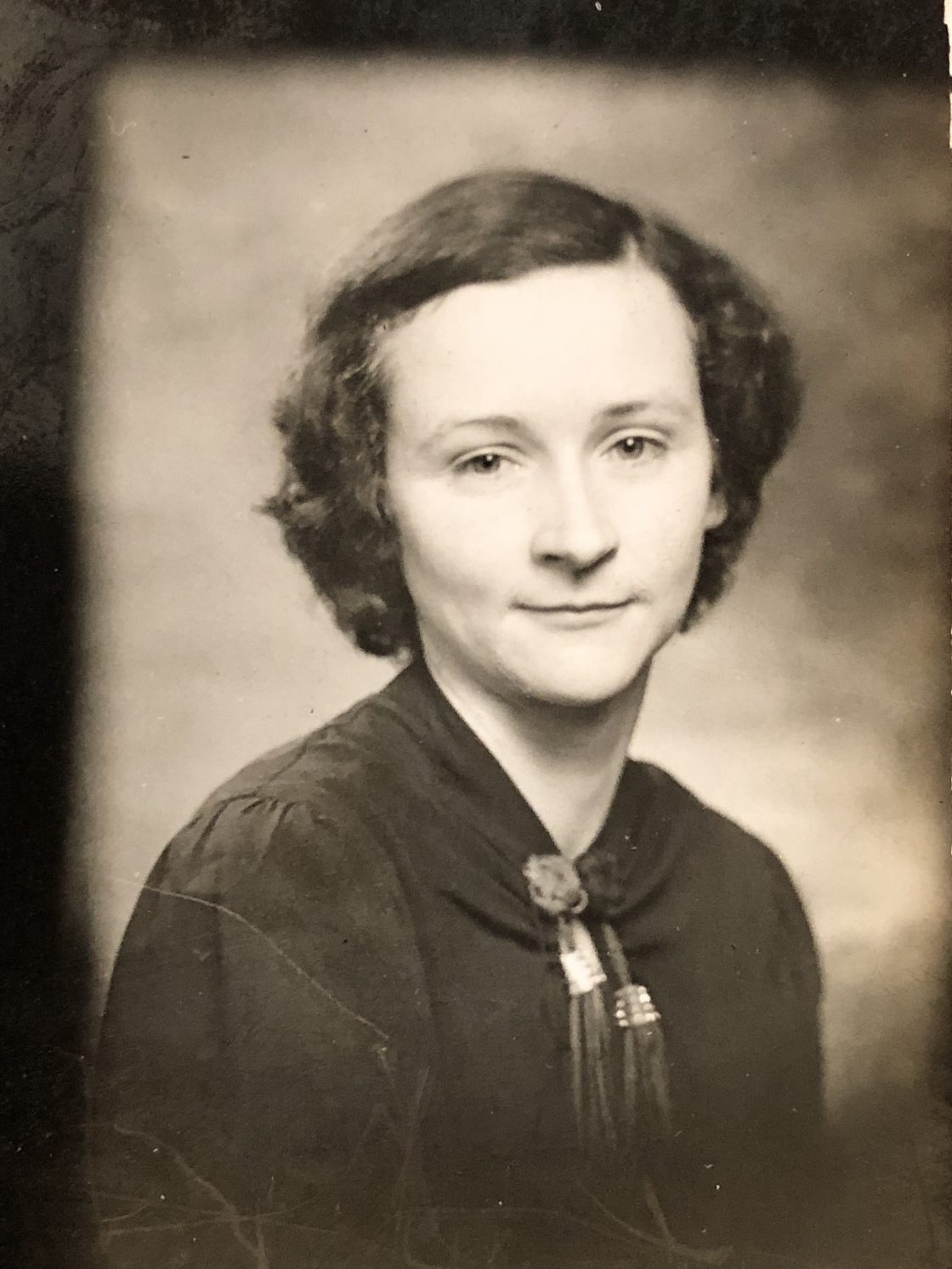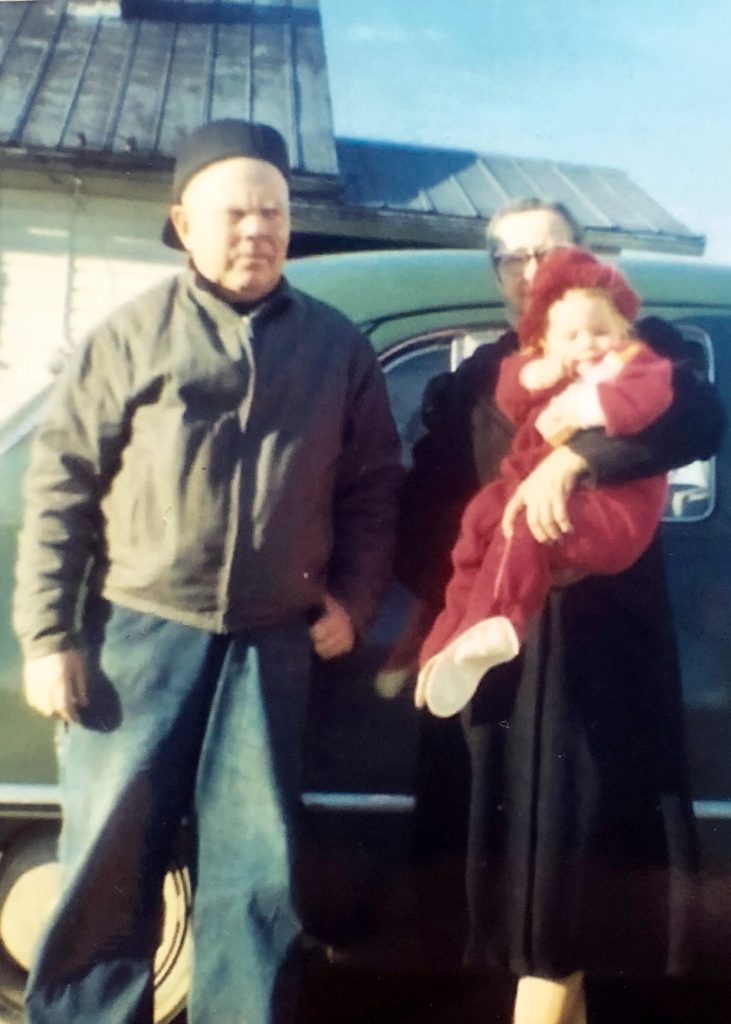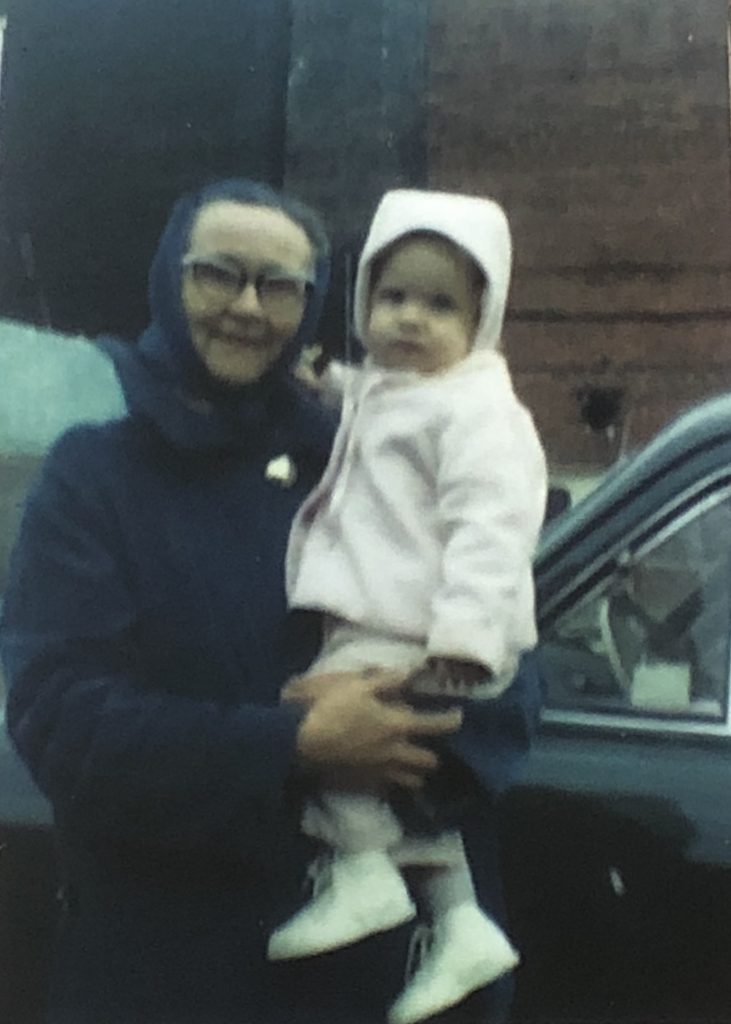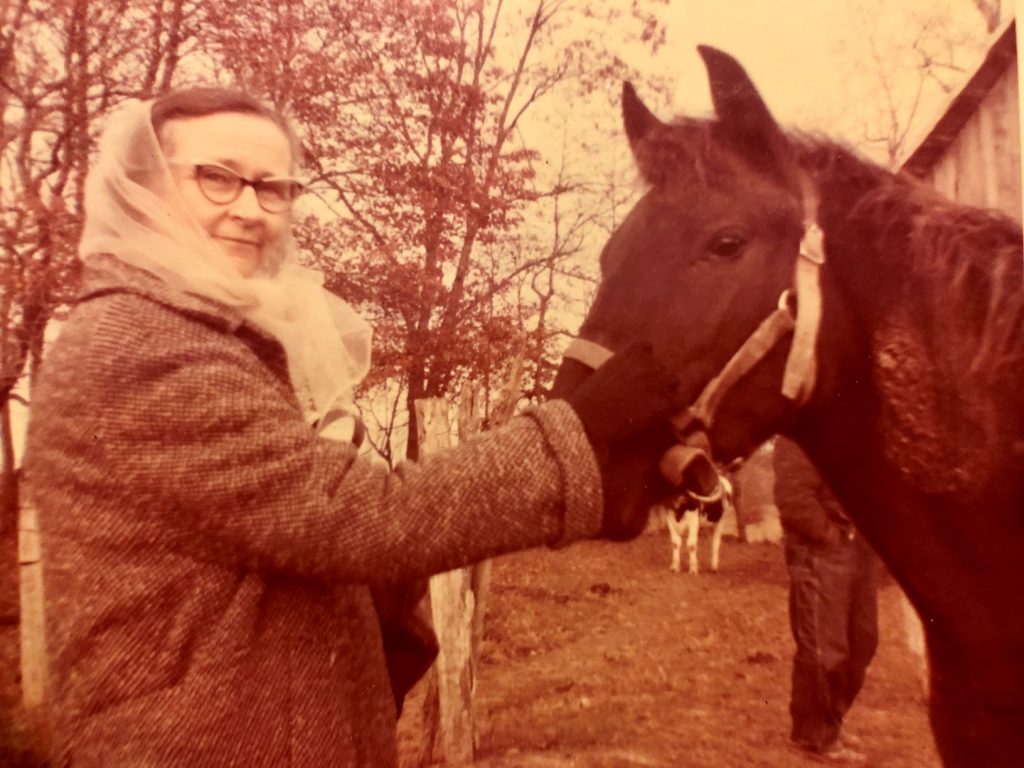Nina Moo is what we called my mother’s mother, my Grandmother Hale. Of course, that wasn’t her real name. Her real name was Nina Mae Keys Hale, and she arrived July 15, 1913, the second of five children born to Orgel Ralph and Addie Mae Shanks Keys. Like her husband, sadly, my grandmother also had a sibling who died as an infant—a brother born in 1916. She also had an older brother, Ivan Ralph (born 1912), and two younger sisters, Edith Elizabeth (born 1919) and Mary Frances (born 1922).
We called her “Nina Moo” because when my oldest sister, Cindy, was little and learning to say grandmotherly names, one name she could say was “Nina,” pronounced with a long “I” sound. “Moo” was also easy for my toddler sister, as my grandparents lived on a farm, and I imagine that Cindy was asked what the cows said. She put the two together, and “Nina Moo” stuck—although as we got older, we didn’t use it as much.
My Grandmother Hale grew up on a farm in the Limestone area of Washington County, Tennessee, near Greene County. I don’t know a lot about her younger days or how she met my grandfather, but they were married in 1939 (I think), and my mother—Clara Mae, their only child—was born in 1943. As a young woman, Grandmother Hale worked at Parks-Belk, a department store in downtown Johnson City.
“She worked in the materials department,” Mom said, as she fondly shared memories of her parents in an interview about a decade ago. “People would buy material to make their dresses and stuff, and she would measure it, however much they needed, and cut it and sell it to them.”
After she stopped working in Johnson City, she was a housewife on the farm where she lived with Granddaddy and Mom.
“She would milk cows twice a day and feed the chickens, gather eggs,” Mom said. “My dad always mowed the yard, and they both worked in the garden.”
Grandmother Hale cooked on an old-fashioned, wood-burning stove. I remember as a child watching with curiosity as she would open the little stove door to get the fire going beneath the stove eyes. She made this delicious pan bread in a cast-iron skillet—and what I wouldn’t give for some of that pan bread today! She and my mother enjoyed coloring eggs at Easter time, and I always think of them when I am dying eggs with my children each spring. Grandmother also made little bird’s nests Easter treats with jellybeans for the eggs, though I am not sure what she used to make the nests.
Mom loved both of her parents dearly, and they enjoyed close family relationships. She said Grandmother Hale encouraged her in her studies as a young student.
“We always had a spelling test on Friday, and my mom would work with me on Thursday night,” she said. “She’d make sure I knew how to spell every word… And I made a 100 the next day.”
Nina Moo was involved in the community. Along with Granddaddy, she voted regularly—the importance of which they instilled in my mother. She also was involved in various clubs and organizations, including the PTA. “She always went to those meetings at school,” Mom said. “I think they were once a month… She belonged to the home demonstration club, and she went to that meeting once a month. It was in the daytime at different people’s houses. And she went to WSCS, which was a women’s Methodist group at church.”
“Me and Mom always went to church every Sunday morning. We usually rode with Pearl Fulkerson (a family friend). We hardly ever missed church.”
Indeed, it’s hard to think of my Grandmother Hale without thinking of the local Methodist Church. When we were little she sometimes would take us with her to worship services—and also to activities such as Vacation Bible School and other events. In her senior years, Grandmother Hale was a member of the church’s Pioneer Club.
After church, it was family time. “We always went to church on Sunday morning,” Mom said. “And one Sunday we would go to Grandmother Hale’s to visit, and the next Sunday to Grandmother Keys’, who was my mother’s mother. And that’s kind of how our Sundays were when I was growing up.”
I remember my mother telling me that Grandmother Hale liked to listen to Billy Graham on the radio—and when he was preaching, Mom wasn’t allowed to utter a word.
“She listened to the radio from the time she got up to the time she went to bed,” Mom said. “(She) even took her portable radio with her to the barn to milk the cows so she could listen to the radio.”
She also had her favorite television shows—including her “stories” that she watched on weekday afternoons, sometimes as she would string beans. Some of her favorite soap operas included “The Young and The Restless” as well as “As The World Turns” and “Guiding Light,” if I recall correctly. Mom said Grandmother Hale also enjoyed watching “Art Linkletter’s House Party” and a local television program called “Memo from Ilo,” which aired on WJHL, the Johnson City station, in the 1950s and ’60s.
When we grandchildren came around, Grandmother Hale was always available to watch us on the farm when my mother went to work. What fond memories we have of playing there, of running around outdoors without a care in the world. She would take us to town some on Friday mornings, and we would shop at the old Kmart in Johnson City and sometimes have lunch in the eatery there. She liked to chew Juicy Fruit gum and was fond of malted milk balls—special treats, which she would share with us grandchildren from time to time.
She drove what I believe was a 1940s Ford sedan, greenish in color, and I remember being embarrassed in the early 1980s on the few occasions when she would pick us up from school in it. My siblings and I would get in and crouch down in the big, overstuffed back seat so our classmates wouldn’t see us in such an old car. (Now it is this behavior that I find embarrassing.) The car did attract attention when we were out and about; I also remember random people commenting on Nina Moo’s car and asking her if it was for sale. It wasn’t.
Nina Moo had long hair that she wore up every day—I remember one day watching her put it up with bobby pins and being so surprised at seeing how long it was because she never wore it down. She preferred dresses over pants. In fact, Mom said she never saw her mother wearing anything but a dress in public. Grandmother Hale was a very modest woman, and I remember she complained about us kids being “half naked” when Mom sent us to the farm one day with our swimsuits. We had put them on to play outside in the summer heat, and Grandmother Hale didn’t think too keenly about how much skin we were showing.
The heat apparently didn’t bother her. “She would freeze in July; she wore a sweater in July,” Mom said. “She wore a watch, but she never wore earrings or any other kind of jewelry. In her later years, she wore glasses, but I don’t think she did earlier. She never did wear high-heel shoes.”
In her later years, Grandmother Hale had a soft, almost frail voice that also had a slight scratch to it. She used many old-time expressions common to Appalachia. In fact, I remember her scratching her nose as she would look out the window and say, “My nose is itching; somebody’s coming.” She also used to hastily say “scat there” after a sneeze.
My Grandmother Hale passed away in 1987, when I was in eighth grade. She had fallen and broken her hip some time before then, and her health continued to decline after that. She and my grandfather are buried in the Gray Community Cemetery, which lies between the Methodist church and funeral home and the fairgrounds. Mom is buried next to them—as are my great-grandparents Hale, my grandfather’s parents.
I remember my Grandmother Hale quite fondly, with love and affection. She was very quiet and reserved and held God and family in high regard. A kindhearted, Christian woman, she worked hard on the farm, tended to her family, attended church regularly and led a humble life.
“She just lived day by day,” Mom said of her mother. “She never laughed a lot… She just did what she had to do.”






